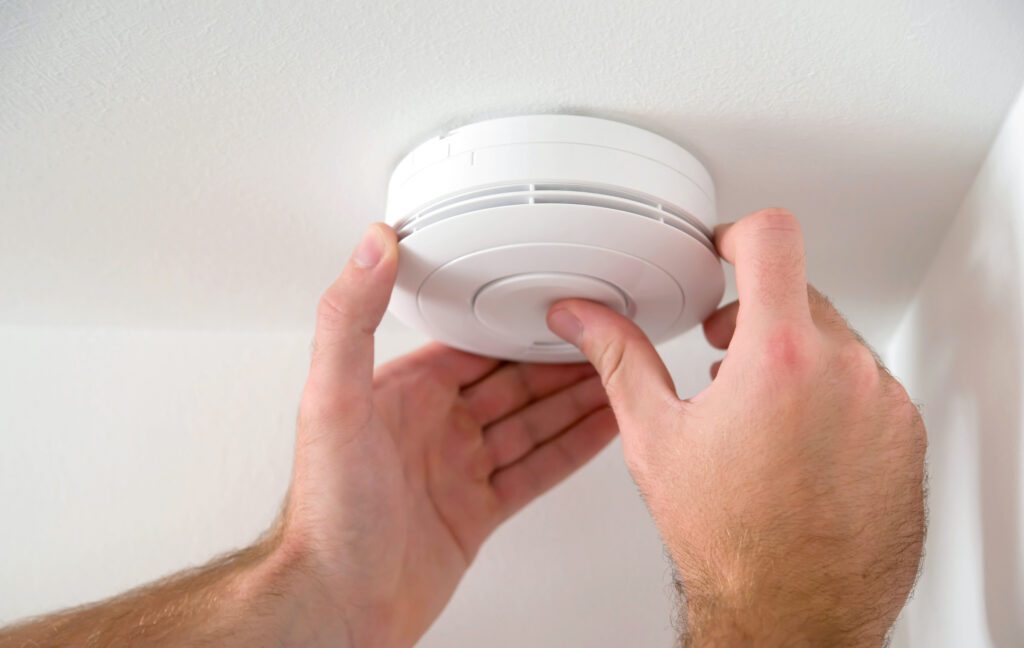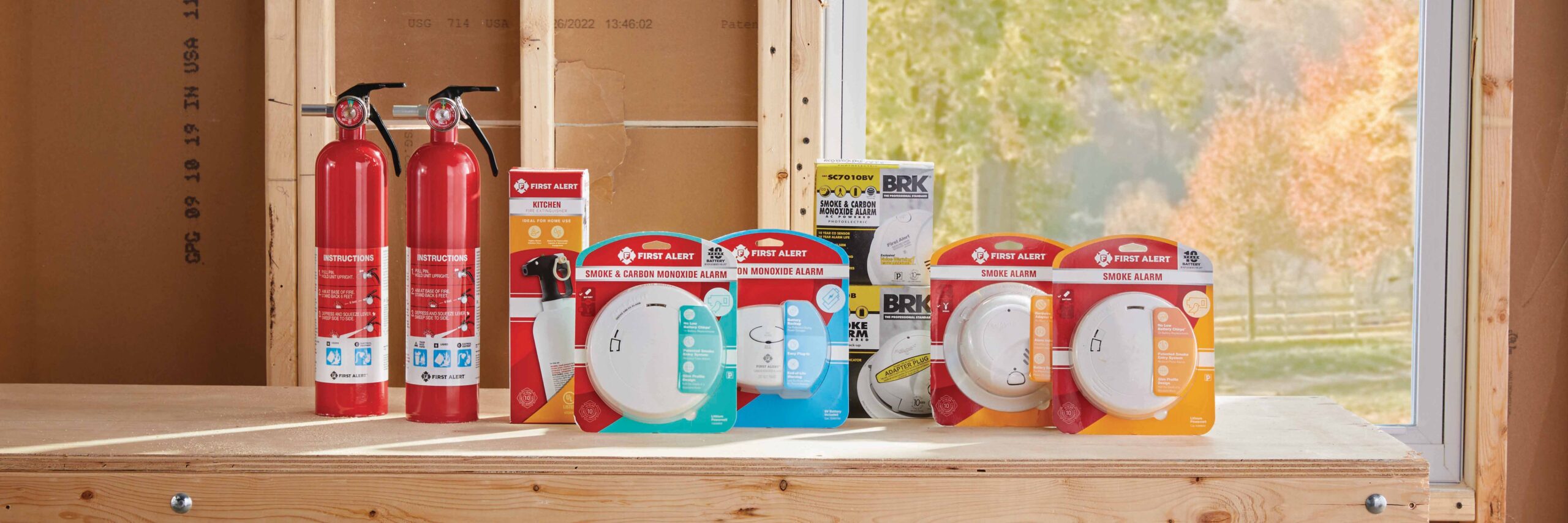It’s October! That means it’s time to celebrate Fire Prevention Month, which is all about raising fire safety awareness and protecting homes and families.

The Williams family is proud to be on the forefront of fire safety. In addition to being a life member of the Rhinebeck Fire Department and previously serving as the Fire Chief, Sandy Williams, the President of Williams Lumber & Home Centers, played an integral role in establishing a 9-1-1 system in Dutchess County to coordinate dispatch and radio communications across the numerous EMS, fire, and police agencies. Before retiring in 2018, he also served for 46 years as Dutchess County Volunteer Deputy Fire Coordinator for the Bureau of Fire, now called the Department of Emergency Response.1
In honor of Fire Prevention Month and Sandy’s many years of service to the Dutchess County community, Williams Lumber would like to share the following fire prevention tips to help keep you and your family safe, especially during the colder months ahead.
- Cooking: Unattended cooking is the leading cause of house fires in the U.S.2, which is why you should always make sure you have an eye on your stove and keep a fire extinguisher nearby. It’s important to declutter flammable materials from your cooking area too. Be sure to turn pots and pans handles towards the back of the stove and monitor any small children and pets to avoid accidents.

- Fireplaces: As temperatures drop, you may be considering using your fireplace. Before you do, have your chimney inspected and cleaned to prevent buildup that can ignite. A good rule of thumb is to clean it at least once a year. Also use a sturdy fireplace screen to keep sparks from accidentally flying into the room.
- Space Heaters: If you’re going to use space heaters, opt for those with automatic cycles to prevent overheating or shut-off functions if they tip over. Be sure to keep them at least three feet away from anything that’s potentially flammable, like curtains, furniture or bedding. Keep them out of reach of children or pets. Never leave a space heater unattended or running while you’re asleep.
- Candles: Who doesn’t love candles on those cool winter nights? They create a cozy ambience and a bit of warmth, but they can be a fire hazard if not treated carefully. Always place candles on stable surfaces in sturdy holders, away from flammable materials and out of reach from kids and pets. Never leave burning candles unattended, and be sure to blow them out before leaving a room.

- Chemicals: If you’re like a lot of Hudson Valley residents, you may have made some home improvements over the summer. What did you do with any extra paint or chemicals? Whether you re-painted your bathroom with Clark + Kensington or stained your deck with Benjamin Moore Woodluxe, it’s important to dispose of your open cans safely to avoid any mishaps in your home or elsewhere, especially since paint thinner, oil-based paints and stains are highly combustible. Don’t forget, you can recycle your paint at Williams Lumber in Rhinebeck.
- Pro Tip: Oily rags from paints, stains, and varnishes can trap heat and cause fires. Always hang them outside or spread them on the ground to dry. Once dry, store them in a cool, shaded place away from heat or properly dispose of them based on your town’s requirements and recommendations.3
- Grills: If you’re grilling outside in colder months, protect your grill with a cover or store it indoors between uses to keep it clean and shielded from the elements, ensuring its longevity. For safe storage, always be sure to allow your grill to cool down completely before bringing it inside and remember to disconnect and leave the propane tank outside, as propane should never be kept inside, even in a shed or garage.

Fire Prevention Kit
Fire safety is a year-round effort. Here’s what you should always have in your home’s Fire Prevention Kit:
- Create a Fire Escape Plan4:
- You should know two ways out of every room in your home, in case one exit is blocked or dangerous to use. Keep in mind a window can be utilized as an exit. For rooms located on an upper level, it can be helpful to have an escape ladder accessible.
- Practice getting low and moving to your exits in case there is smoke.
- Choose a meeting place a safe distance from your home.
- Have a home fire drill at least twice a year.

- Fire Extinguisher & Smoke Detector: Be sure to check your fire extinguisher and smoke detectors at least once a year. It’s best to be proactive and change your smoke detector batteries before they die. When the battery in your smoke detector dies, you’ll hear a constant beeping from the detector; simply replace the battery and the beeping will stop.
- Pro Tip: In addition to smoke detectors, it’s important to have carbon monoxide (CO) detectors in your home. Some devices can work as both smoke and carbon monoxide detectors, although this isn’t always the case. Carbon monoxide is an odorless, colorless gas that can cause sudden poisoning and death if inhaled. During the colder months, it’s important to check your carbon monoxide detectors in addition to your smoke detectors as carbon monoxide is a byproduct of common heat sources such as stoves, lanterns, grills, fireplaces, gas ranges, furnaces, generators and combustion engines. It’s also important to check all of these items for possible leaks to prevent CO build up in your home.
- Emergency Fire Blanket: If a fire starts, simply place the blanket over the fire to quickly suffocate it before it gets out of control.
- Emergency Lighting & Communication: Also outfit your kit with a battery-powered communication device, like a set of walkie-talkies, and some flashlights in case the power is out. Be sure to have appropriately-sized backup batteries on hand.
- First Aid Kit: What fire prevention kit would be complete without a first aid kit? Make sure you know where your first aid kit is located, keeping it easily accessible and fully stocked at all times.

Create your Fire Prevention Kit Today. Visit Williams Lumber.
Williams Lumber is dedicated to the community and ensuring that everyone can get what they need to make their homes as safe as possible. Consider sharing these free tips with your family and friends to help spread awareness this Fire Prevention Month and visit Williams Lumber today for everything you need to create your own fire prevention kit, and a safe and comfortable home year round.
1 https://content.govdelivery.com/accounts/NYDUTCHESS/bulletins/2385321
2 https://nationalgeneral.com/about-us/news-and-blog/top-causes-of-fire/
4 https://www.ready.gov/home-fire-escape-plan
Make a plan to visit one of our seven Williams Lumber locations today!
Rhinebeck | 6760 Rte 9 | 845.876.WOOD
Hudson | 3679 Rte 9 | 518.851.3641
Hopewell Junction | 908 Rte 82 | 845.221.2751
Tannersville | 34 Bloomer Rd | 518.589.5200
Red Hook | 9-11 East Market St | 845.758.5615
Pleasant Valley | 2424 Rte 44 | 845.605.3520
High Falls | 317 Kyserike Rd | 845.687.7676

